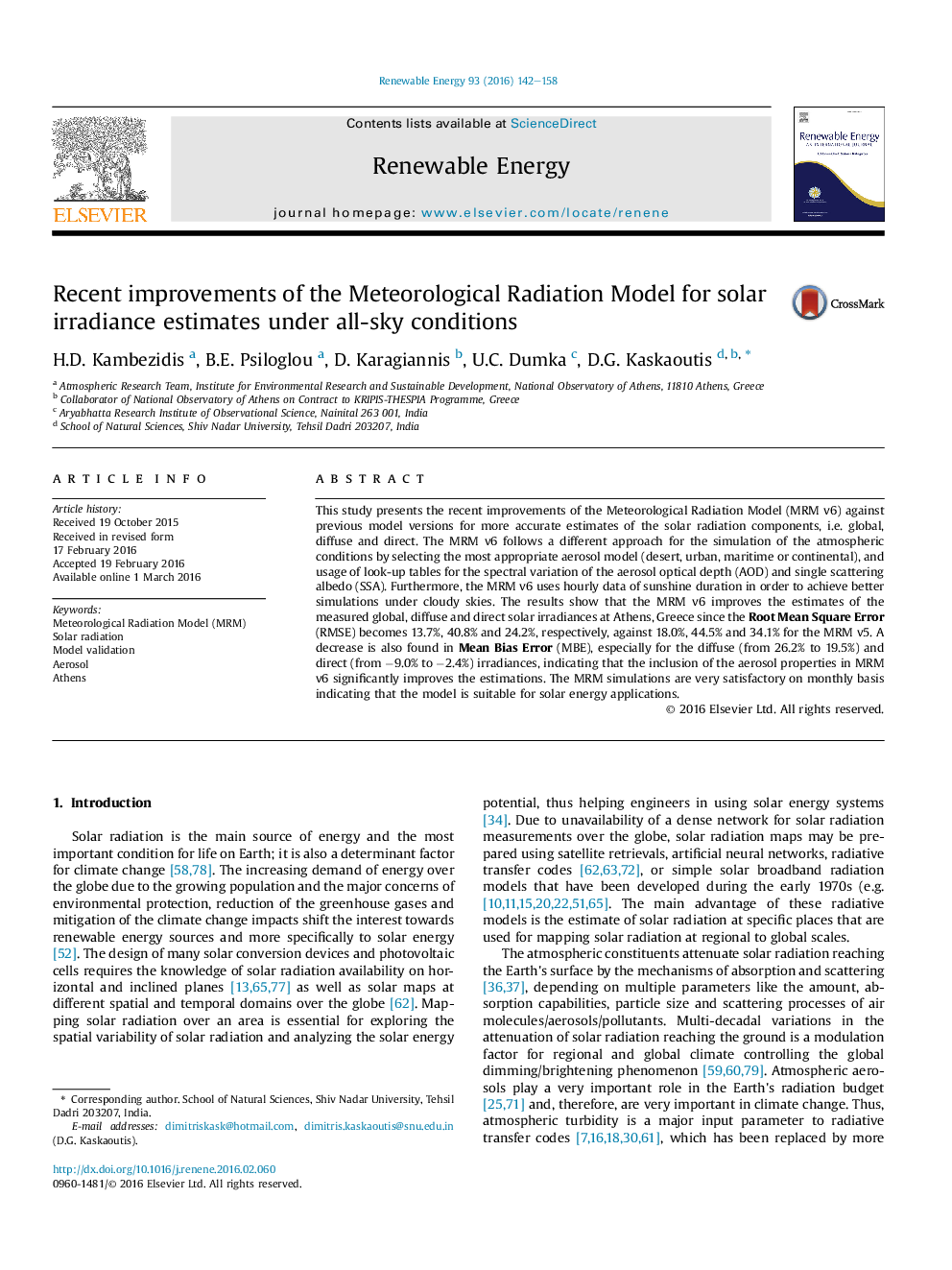| Article ID | Journal | Published Year | Pages | File Type |
|---|---|---|---|---|
| 299756 | Renewable Energy | 2016 | 17 Pages |
•Improvements of the global, diffuse and direct irradiances simulation via the new version MRM v6.•Inclusion of aerosol models for the prediction of solar irradiance in MRM v6.•The model is capable in predicting the daily and monthly solar radiation for energy applications.•Low model performance in predicting the diffuse irradiance around noon.
This study presents the recent improvements of the Meteorological Radiation Model (MRM v6) against previous model versions for more accurate estimates of the solar radiation components, i.e. global, diffuse and direct. The MRM v6 follows a different approach for the simulation of the atmospheric conditions by selecting the most appropriate aerosol model (desert, urban, maritime or continental), and usage of look-up tables for the spectral variation of the aerosol optical depth (AOD) and single scattering albedo (SSA). Furthermore, the MRM v6 uses hourly data of sunshine duration in order to achieve better simulations under cloudy skies. The results show that the MRM v6 improves the estimates of the measured global, diffuse and direct solar irradiances at Athens, Greece since the Root Mean Square Error (RMSE) becomes 13.7%, 40.8% and 24.2%, respectively, against 18.0%, 44.5% and 34.1% for the MRM v5. A decrease is also found in Mean Bias Error (MBE), especially for the diffuse (from 26.2% to 19.5%) and direct (from −9.0% to −2.4%) irradiances, indicating that the inclusion of the aerosol properties in MRM v6 significantly improves the estimations. The MRM simulations are very satisfactory on monthly basis indicating that the model is suitable for solar energy applications.
